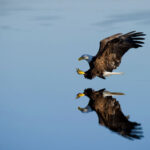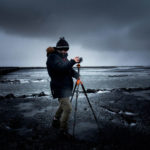It happens all the time. People get a fast lens and only want to shoot with it wide open. Of course, the point of having a fast lens is to utilize its wide aperture settings, but not all photographs benefit from f/1.8 or wider. In fact, a wide aperture can take away from certain photographs. Sound crazy? Listen to Matt Granger as he provides a quick primer on aperture settings:
In the video, Granger says it best:
“It’s not as simple as just throwing it wide open for portraits and having it stopped right down for landscapes.”
As photographers, it’s easy to get set into our ways. Many of us are taught that we should shoot with wider apertures for portraits so the background is blurred and doesn’t distract from the subject. We are also often told that landscapes should be shot at narrow apertures so the maximum depth of field can be achieved. While these are solid starting guidelines, they shouldn’t necessarily be regarded as law.
Portraiture and Depth Of Field
Take a look at the example portrait below. This image was taken at f/1.8, which did an excellent job of creating bokeh in the background. But upon closer inspection, we can see that the depth of field is so shallow that only one of the subject’s eyes is in focus.

f/1.8
To get both of the subject’s eyes in focus without changing the angle of the model or the camera, it’s necessary to stop down the aperture to bring more of the subject’s face within the range of focus. For example, Granger notes that he regularly shoots portraits at f/5.6 or f/8.
Landscapes and Depth Of Field
It goes without saying that the majority of time you will want as much of the scene in focus as possible when shooting landscapes. Naturally, closing your aperture to f/22 seems like a good way to achieve that, but it is not the only way. Look at this shot Granger took of Machu Picchu, what aperture setting do you think he used? F/16? F/22?

Can you guess what aperture was used for this landscape photo?
Would you be surprised to learn that this image was taken wide open at an aperture of f/1.4? Are you asking yourself how he managed to get the entire image in focus at such a wide aperture?
It’s actually quite simple. The farther away your subject is, the more depth of field you are starting with.
“If you are shooting something like Machu Picchu at 24mm at 1.4, if your subject is 100 feet away, for example, that’s your focus point. You’re going to have everything in sharp [focus] from 70 feet away all the way to infinity. That’s assuming you are using a full frame camera.”
To that end, not all lenses are created equally. Some perform much better wide open than others, which is definitely something you should consider. Regardless, even with a lens of lesser quality, you will probably not have to stop all the way down to f/22. Experiment with your lens to see its capabilities by shooting the same scene at various apertures. See if you can find its “sweet spot” in regards to aperture settings.
Like This Article?
Don't Miss The Next One!
Join over 100,000 photographers of all experience levels who receive our free photography tips and articles to stay current:






Leave a Reply